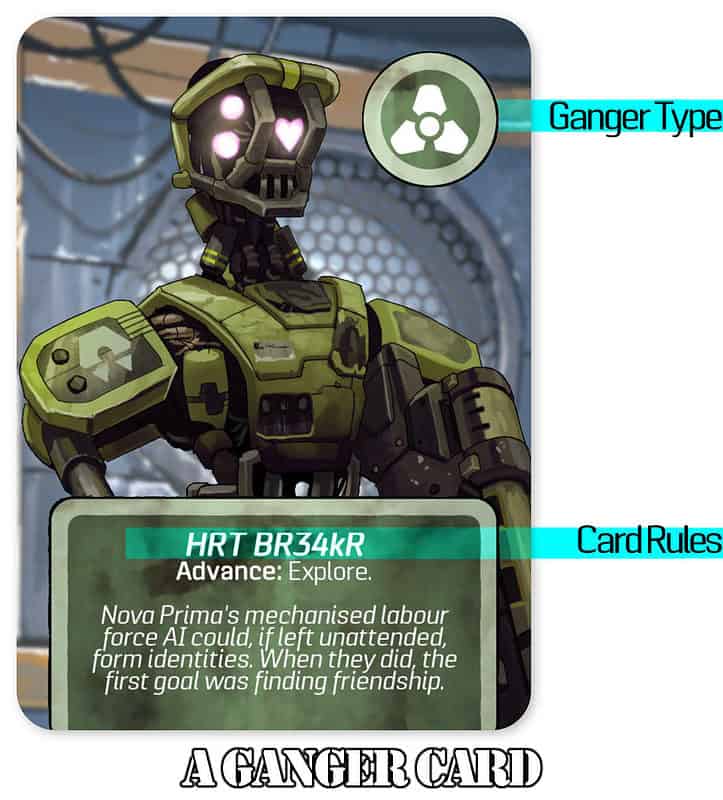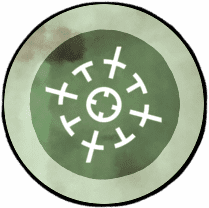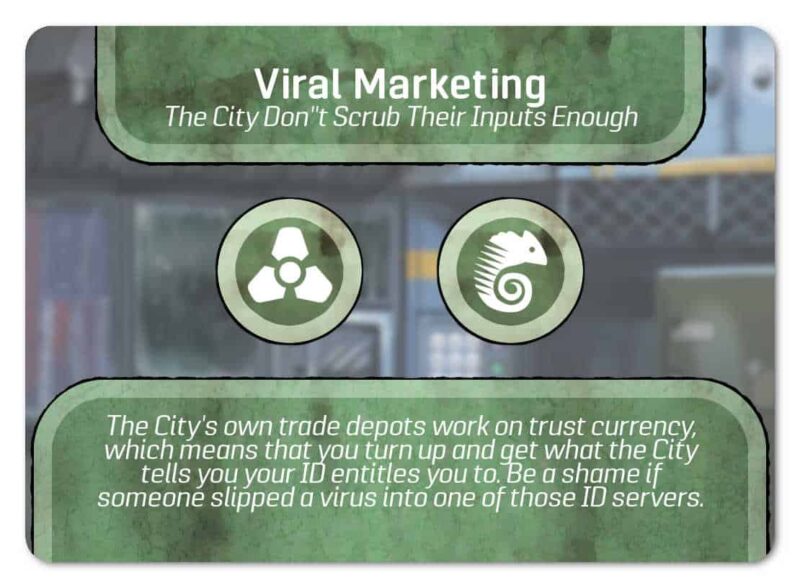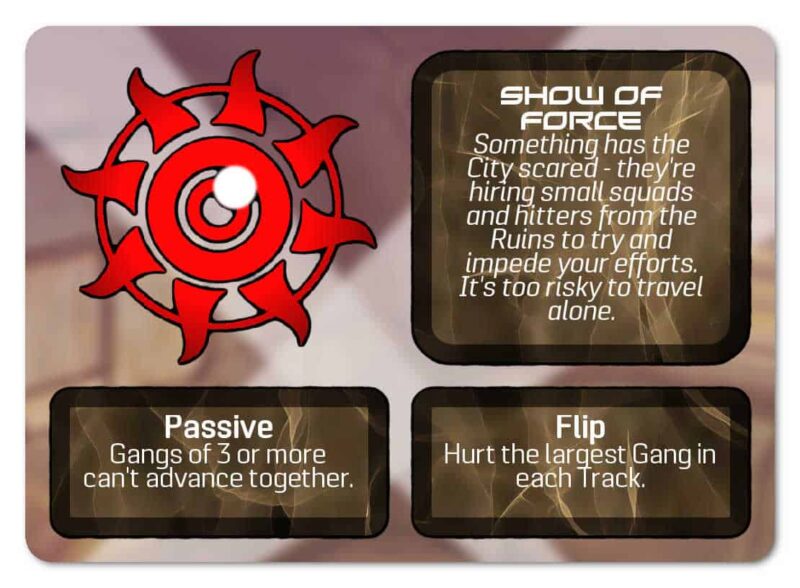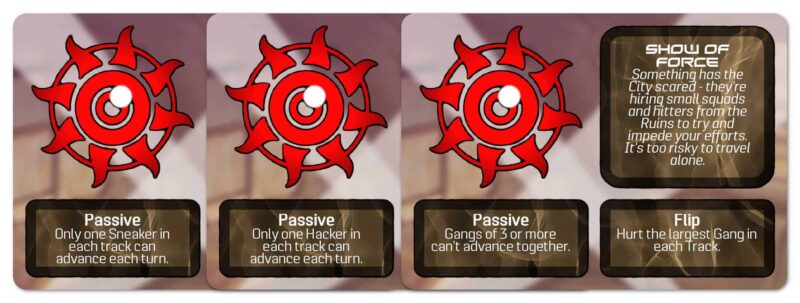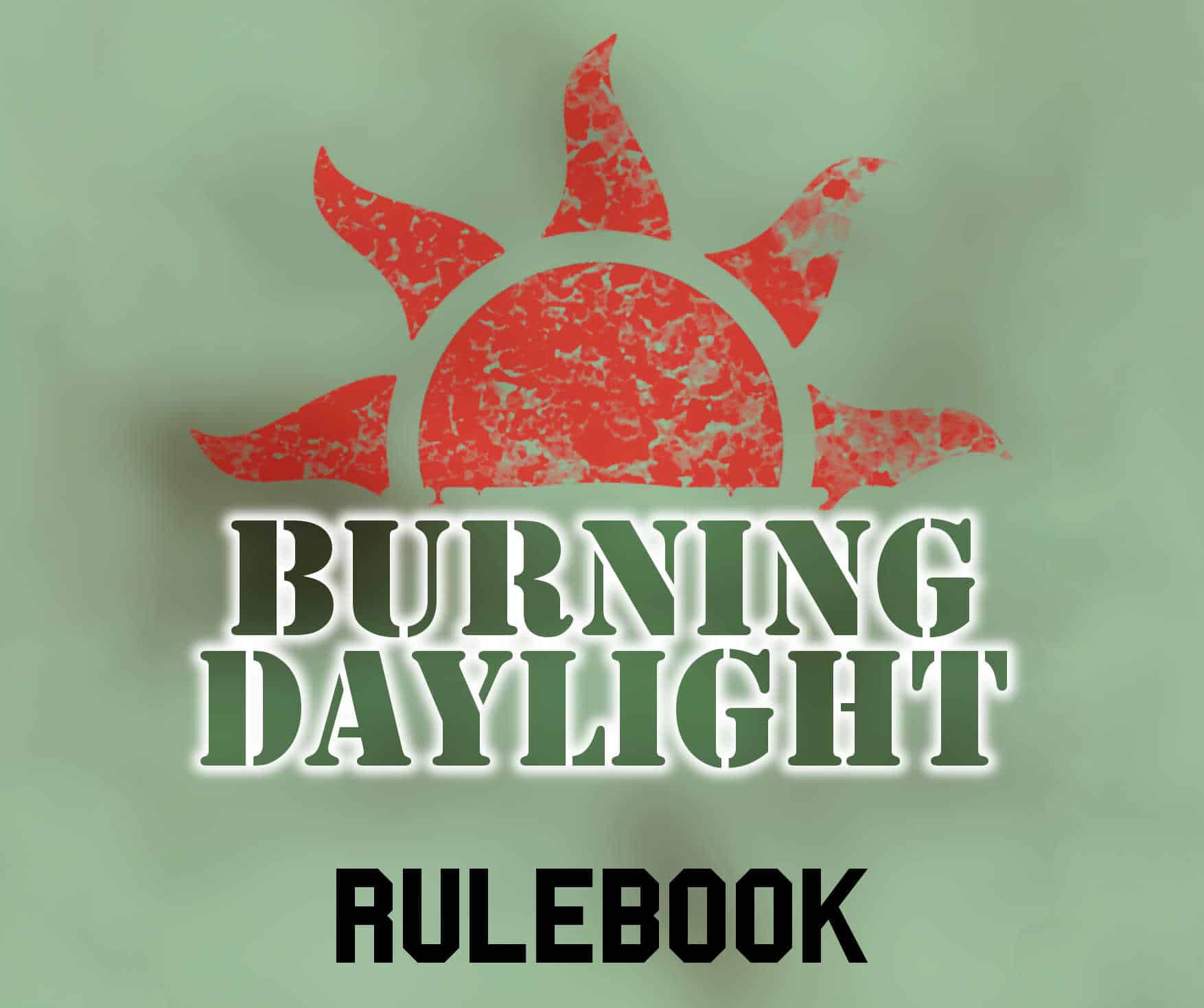
It was a long time ago—they call it the Sunwipe. Some say the sun did something, wrecked the sky. Some say it was a bomb, blew up the very idea of civilisation. Whatever it was, that was then, and this is now.
There used to be a world of thinking machines and excess. They ignored the warnings about the world they were changing, and, well, people died. There were wars. Lots of hardware got built to hold on to what was left. And then there weren’t enough people to do or make the things, and the land started to take over. The world became a place of forests.
And then the forests started to change.
The old texts talk about playing in the sun, which is madness. Midday sun is so hot and the air burns so hot that direct sunlight can kill ya. You have to know how to survive, out in the shade, move in the night, treat burns. You gotta know how to take care of one another.
In the remains of what was, the City happened. It rose with its message that the world was scary, the world was ugly, the forest was terrible, and anything they did to preserve the city was alright. Out in the woods, the cults worshipping the sun and the stones learned how to survive in their own way.
And wedged between them both – between the technology of yesterday and abandoning everything, there’s us. The gangs, in the abandoned, overgrown remains of ‘malls’ and ‘suburbs.’
And we’re using our days as best we can.
Introduction
Access
Burning Daylight requires players who can read the rules on the cards in their hand. Players will need to be able to track their cards from turn to turn. While mission cards have a lot of text on them, none of it is essential to play the game—you just need to be able to see the symbols for each mission. However, the rules for your gang can be pretty complicated and you’ll get the best out of the game if you can keep straight how they work.
And always: Remember to respect the players and their needs.
Components
In your copy of Burning Daylight, you should have the following:
- 25 Ganger Cards
- 34 Mission Cards
- 13 Event Cards
Ganger Cards represent the members of your Gang—an arrangement of punks and geeks who all have special skills. Each Ganger has rules, and a type—one of Hacker, Runner, Sneaker, Fighter, or Helper.
Each of these Ganger types can do different kinds of missions—Hackers do Science missions, Runners go on Runs, Sneakers do Stealth missions, Fighters do Combat missions, and Helpers can do any kind of mission—if they’re helping someone else out on that mission.
Each Mission Card looks like this:
These cards represents opportunities your Gang has that let you gather resources, fight back against your enemies, protect the people in the gang’s territory, and build your reputation and control over that turf. Each gang has a number of marks indicating what kind of gangers are necessary to complete it, a name, a subtitle, and some flavour text explaining what it is.
Event Cards look like this:
Each Event card represents the City’s security forces doing things to interfere with missions or an abrupt surprise of their motions interrupting yours.
How To Play
Burning Daylight is a hand-management game of sending your crew of gangers out on missions, or letting them pursue their own projects, trying to get points that show how well-established your gang is. To get started, you’re first going to need a gang, and the size of your gang, and goal score all equal the same
| Players | Gangers | Goal |
|---|---|---|
| 2 | 8 | 16 |
| 3 | 7 | 14 |
| 4 | 6 | 12 |
| 5 | 5 | 10 |
Why Move The Goalposts?
The goal score goes up with fewer players, because your gangs are bigger, and you have more chances to get bigger, more profitable missions. The game becomes more about pulling off combos than seizing opportunities. Also you’re less likely to capitalise on what other players do, because there are just fewer of them!
Also, when small groups have to go through a lot of cards to reach their goals, they’re more likely to see Event cards, which increases the risk of Crackdowns! hen you have a single face-up mission, each player has their gang, and the deck is in a position every player can reach it, the game is ready to begin. Determine the first player by whatever means you prefer—paper-rock-scissors, fanciest haircut, whatever.
Your Gang
To start the game, each player needs to choose their gang. You can do this a lot of ways. The easiest way to do it is to shuffle up the gangers and deal the right number to each player at random.
You can also draft them—deal all the cards out to each player, then each player chooses one ganger from the hand they get, and hand the rest to the next player, over and over until all the players have chosen six gangers.
You can also just agree upon teams you like. There’s no problem with players choosing gangs of characters they like to play!
The characters are designed so that most any gang can work, but you want some variety. Players can view each character in terms of what they bring to your group—some characters are Explorers, some are Escorts, some do their own projects.
Setting Up
Once players have their gangs, shuffle the Mission and Event cards together into what will be called the Deck, until the top card of the deck is a mission card, then flip it over and set it next to the Mission deck. This is the First Mission. Any time this card gets taken out of the game, it gets replaced from the deck immediately.
Then, if the card on top of the Deck is an Event card, put it on the bottom of the deck, and repeat until the top card is a Mission card.
Play
Burning Daylight is a game where you’re sending your gang out to achieve missions or do their own projects while you manage them from base. When you send one or more a gangers out, they move onto your track.
You have three slots in your track, indicating if your ganger just left, is on a mission, or is about to return. Since the sunlight is dangerous in the world of Burning Daylight, everyone who leaves the base to do things has to be careful about when they travel—making travel to and from missions itself an inherent risk, which you must tend to carefully.
Gangers move along the track each turn, when they Advance. Some gangers have rules about what happens when they do that, and some things will make advancing along the track harder for some types of Ganger.
Turn Order
Every turn follows the same structure:
| Events | If there’s an event card waiting on top of the deck, flip it over and follow its instructions. |
| Advance | Advance all your gangers that you can one step along the track. Put any uninjured Gangers that leave the track into your hand. Put any gangers in Recover into your hand, uninjured, then put any injured gangers who leave the track into Recovery. |
| Actions | Pick one of the following actions: Send a Team to do a Mission Use a Ganger’s ability Advance a single Ganger on the Track |
| End | Pass the turn to the next player. |
Events
Some cards in the deck have a bright red card back, marked with a symbol of the City Security forces. These are Event Cards. Event Cards represent times when the City’s forces are about to get involved, or have taken actions that change the way the gangs can normally act. It is notable that the City is the source of these problems, not the Wildren or the Forest.
Whenever a player action reveals the top card of the deck to be an Event card, no more cards can be drawn or shown from the top of the deck. Any effect that wants to do that fails completely. Note that this only applies if the top card is an Event card—if a card’s abilities do something with the top cards of the deck, and sees an event card, the ability still works.
At the start of your turn, the Event card on top of the deck gets flipped over. Event cards all have a flip rule, and a passive effect. The Flip effect happens once, when the event card is first flipped, and then the passive effect remains as long as the card is in play.
Whenever you flip an Event card, you flip it and lay it atop any existing event card so the previous card’s passive rule still shows, because those passive rules are still happening.
When you have three Event cards revealed, the next event is replaced with a crackdown.
A Crackdown is when the city decides there’s been enough activity out of gangs like yours, and send out an attack crew to clean things up. Take all the event cards and shuffle them into the deck, then take all the face-up mission cards, shuffle them, and put them on the bottom of the deck. This, when done repeatedly, slowly concentrates events towards the top of the deck.
Advance
Your automatic advance is when you take all your gangers on the track, and move them one slot over. People who Just Left are now On Mission, people who were On Mission move to Returning, then people who are Returning return to your hand. This happens equally and at the same time.
Some Event cards make it so only a single ganger of a particular type can advance. In that case, if you have more than one Ganger of that type in your track, you have to pick which one Advances.
Note that any gangers who have an Advance ability trigger here, but only if they were alone when they started to advance.
Actions
On your turn you can do one of three things:
- You can Complete a Mission
- You can Deploy a Ganger
- Or you can Advance a Ganger.
To Complete A Mission, you take a collection of gangers from your hand whose symbols match the mission’s symbols and put them into the Track, and take that mission.
Whenever you complete a mission, if it’s the First Mission, replace it with the top card of the deck. If the top card of the deck is an Event card, set it aside and reveal cards from the top of the deck until you find a Mission card, and put that card in the First Mission space. Put all the other cards revealed this way on the bottom of the deck in a random order, and replace the top card of the deck with the set-aside Event card. The First Mission slot should never be empty.
You need the same number of gangers—you can’t play 3 gangers if the mission needs 2, for example—and they must have the same symbols.
Cooperator gangers can replace any symbol in a mission, but can’t do all of the things in a mission. At least one of the symbols in a mission must be fulfilled by a ganger who actually has that symbol.
To Deploy a Ganger, take that Ganger alone and set them into your track. If they have a Play ability, it triggers here.
To Advance a Ganger, pick one of the gangers in your track, and advance them. If they were alone when they started to advance and have Advance abilities, they trigger then. You can use this even if that Ganger already advanced this turn, but you can’t use it if there’s an Event card limiting the number of Gangers of that type that can advance each turn.
End of Turn
Once you’ve done your action, your turn ends and play passes to the next player.
Winning
Every mission you fulfil is worth Points, and so are each of your Claimed cards. A Claimed card is worth 1 point, and a completed mission is worth the number of Gangers required to finish it—2 or 3 points. The winner of the game is the player who hits their Goal score first.
Game Terms
| Advance | To move along the Track by one step. Gangers with Advance abilities trigger whenever they’re Advanced along the track, if they were alone when they started to Advance. |
| Claim | Take a card from the deck. Claimed cards are kept, face-down with your completed missions, and are worth 1 point each at the end of the game. |
| Crackdown | When there are three or more Event cards revealed, the next Event triggers a Crackdown. Shuffle the face-up Event cards into the deck, then put the remaining face-up missions on the bottom of the deck. |
| Escort | Escorted characters are protected from being injured. If a ganger or gangers are escorted, they can’t be injured, by event cards or otherwise. |
| Explore | Take the top mission card of the deck and reveal it, setting it where everyone can see it, next to the other missions. Explored missions are available for everyone to complete. |
| Heal | Turn an injured card face-up. It’s no longer injured. |
| Passive | An ability that works all the time that the card is in the Track. |
| Play | The time when you put the ganger card from your hand onto the track alone. |
| Return | When the card leaves the track and returns to your hand. Gangers with Return abilities trigger when they move from the track to your hand. This means Injured characters’ return abilities do not trigger, as they have to recover off the Track. |
| Reveal | Turn a card from the deck face-up. Everyone gets to see a revealed card. |
Advanced Rules
Once you’re familiar with the way the game plays in basic, you may find some elements of the game could be more interesting. The basic rules of the game are designed to be very ‘low contact’—players don’t really have the time to compete for missions, because missions are cleared as soon as you play them. They’re also designed to make decisions fast—players advance all their gangers at once, meaning your decisions on your turn are mostly limited to one of three simple options.
However, you may want a game feel that is both more competitive, and makes the advance stage more complex. For that, we present Command Points.
Command Points
The Command Point rules alter the Advance stage of the game. At the start of your Advance stage, you gain a number of Command points equal to the number of Gangers you have in your track—alone or in groups. Then, you can advance any gangers on your track for 1 Command point.
This can’t be done unlimitedly. There are some rules:
- You can’t Advance a Ganger off the track if they started the turn at the start of the Track.
- The Fisherman consumes Command points to store Claimed cards.
When you use the Advance action as your one Action of the turn, you get a single Command point that you have to spend immediately.
The other major changes of Command Points is you can never put more than one Ganger into play at a time, and You complete missions on Return.
When you play with Command points, you can’t put more than one Ganger onto the track at a time; you can put them into an occupied slot, and you can fill that slot with as many characters as you want, but you still have to put them there one at a time.
This means that you can’t ever deploy characters to complete a mission. Missions are completed in this rules variant when a group leaves the track—if the group that leave the track fulfil the requirements for a mission, you can take that mission but only one mission per group, and only one mission per Advance phase.
This variant means players can ‘race’ to get missions, and can interfere with one another’s missions. It also means that you’re likely to spend more of your time in the Advance phase rather than the Play phase.
Credits
Game, Rulebook: Talen Lee
Art: Shamans Stock Art
Icons: Game-Icons.net
Special Thanks
To Rachel and Cae for worldbuilding and naming
With a hat-tip to Zandra, Clay, Benn, Vivian, Jess, Calvin and Librus
To Pendix and Ben, who helped with playtesting
To Al and Bax, who both encouraged this project when it was wee and smol

